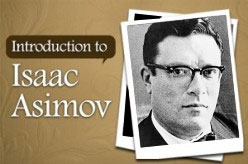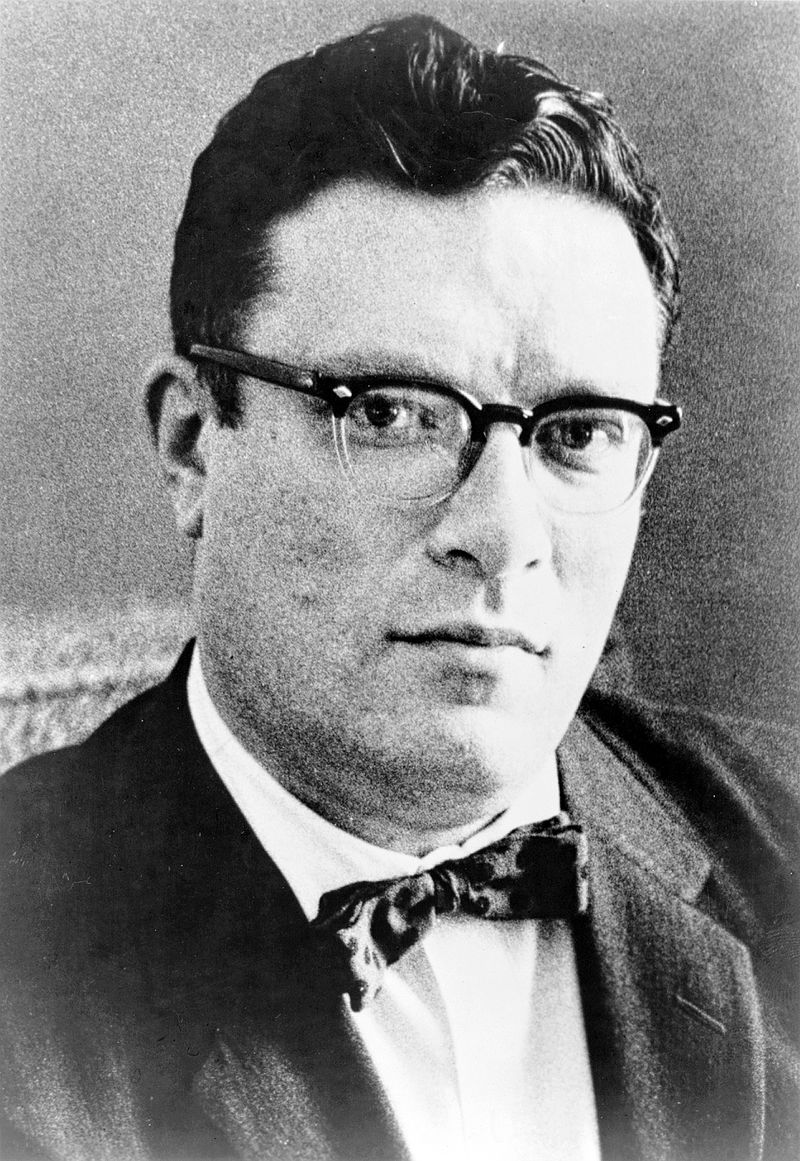Early life: the young prodigy
One of the greatest science fiction writers of all time, Isaac Asimov was born to Jewish parents to Petroivichi – a faraway village in Russia, in 1920. There’s no definitive record pertaining to his date of birth but his family gave him a range of dates between October 4 and January 2, 1920. He chose January 2 as his date of birth and celebrated his birthdays then. When he was only a year old, he contracted double pneumonia. He cheated death but 16 other unfortunate children perished because of the disease.
The political conditions there led the Asimov family to migrate to the United States when he was three years old. Although, a Russian citizen, he never learned Russian owing to his family’s immigration. Besides, they only spoke English and Yiddish with him, making him fluent in both these languages.
A young science fiction writer
If you could find the perfect “nerd” or “bookworm”, Asimov was both. Asimov was an avid reader since early childhood. His appetite for reading books was seemingly insatiable. He had a particular taste for science fiction magazines, despite his father’s initial reluctance to let him read science fiction which considered “trash”. His family owned a chain of candy stores during the great depression. Asimov was expected to punch in early in the morning and punch out late at night at these stores. Aside from these long working hours, he often had to work overtime. The stores also sold magazines, providing him with an ample supply of reading material. He used to consume a great deal of science fiction, ultimately leading the young prodigy to started to write his own stories at the age of 11.
He authored 500 books during his entire writing career, that’s a whopping 12 books a year, or one book a month! This tremendous body of work makes him the most prolific science fiction writers of all time. He penned and edited science fiction short stories and novels as well as non-fiction books aimed at a general audience, with little to no scientific backgrounds. His novels, The Foundation series and I, Robot, are two of his most critically acclaimed and famous literary works.
Education
Asimov wanted to become a doctor, so he applied to five different medical schools in New York twice. Unfortunately, none of the medical schools accepted him. Columbia’s graduate school for chemistry also rejected him. Columbia college also turned him down on the account of all the seats for Jewish students have been taken already.
He graduated from University Extension in BSc. Biochemistry. Originally, he had opted for Zoology but switched majors when he had to perform a dissection on an alley cat. Later on, he earned an M.A in Chemistry and a Ph.D. in Chemistry.
He served as a chemist during world war two after he was drafted in the military. He was honorably discharged after his promotion to corporal. He continued pursuing higher education after that.
Having completed his education, he started teaching biochemistry at the Boston school university of medicine. A couple of years after that, writing proved to be more lucrative than teaching for him. So, he quit researching to spend more time writing. To accolade his writing, the university promoted him to professor of biochemistry from an associate professor.
Asimov received a bachelor of science degree, master’s degree in chemistry and a Ph.D. in biochemistry all from the Columbia University. During that time Asimov had already been also a writer, and so the university promoted him to full professor based on his writings.
Writing Career
In his writing career, Asimov has written many serialized novels and short stories. He kicked off his writing career with, “Marooned off Vesta” and shortly after, “The weapon too dreadful to use” and “Trends” which were published in pulp magazines. Enthusiasts believe this marked the beginning of the so-called, Golden age of science fiction. In September of 1941, he wrote “Nightfall”, which two decades later SFWA (Science fiction writers of America) elected the best science fiction story ever written. He often described “Nightfall” as a defining moment in his career which brought him recognition in the world of science fiction.
As a part-time writer, he published the first installment in what would later become the Foundation Trilogy. It introduced the fictional concept of “psychohistory” – the idea that while individuals are unpredictable, it is possible to predict the behavior of large populations. After that, he went on and wrote another novel I, Robot. It is a collection of stories that center around “positronic” robots. His most celebrated and well-known work is perhaps the Three Laws of Robotics, which are:
- A robot may not injure a human being or, through inaction, allow a human being to come to harm.
- A robot must obey orders given it by human beings except where such orders would conflict with the First Law.
- A robot must protect its own existence as long as such protection does not conflict with the First or Second Law.
These three laws of robotics were hardwired into each positronic robot.
He also wrote other “series” and trilogy works such as the Galactic Empire Series, and the Foundation series that comprise of trilogies and extended stories.
In addition to his fictional works, Asimov also authored numerous non-fiction science books made specifically for the average reader. These include “The Chemicals of Life”, “Inside the Atom”, “The World of Nitrogen”, “Life and Energy”, “The Human Brain”, “The Neutrino”, “Science, Numbers and I”, “Our World in Space” and “Views of The Universe”. He also had to do extensive writing. If you have to as well, check out this essay sample.
Asimov’s awards; his death and legacy to the sci-fi literature
Asimov’s works received numerous accolades including awards from the American Academy of Arts and Sciences, numerous Hugo, Locus, and Nebula awards. There is posthumous recognition as well, and even an asteroid and a Martian crater were named in his honor.
And so far, he is the only science fiction writer to receive this honor.
The Oxford Dictionary of English accredits him to coining the terms, “robotics”, “psychohistory” and “positronic” – the evolution of consciousness in machines.
He suffered from severe acrophobia – fear of heights and almost never traveled by air save for during his stint in the US military. For this reason, he regularly traveled by cruise ships. He also had claustrophilia – the opposite of claustrophobia. His works reflect his love for confined spaces such as domes or underground homes.
He was married twice. Asimov’s second wife, Janet who was also a psychoanalyst and writer, helped him author the Norby Chronicles, another series of stories.
In 1992, Asimov died due to heart and kidney failure. Ten years later, his wife Janet revealed that he died of such complications from an HIV infection, contracted through a blood transfusion when he underwent bypass surgery.
Along with Robert A. Heinlein and Arthur C. Clarke, Isaac Asimov is considered one of the masters of hard science fiction. On top of 500 books, he also penned 90,000 various other publications covering mystery, fantasy and also non-fiction science books aimed for the laymen. No wonder he’s also considered one of the most prolific writers ever.
If you are dismissive of the science fiction genre, reading Isaac Asimov might make you revise your opinion.

